The village of Totsukawa on the Kii Peninsula is over 670 square kilometers in size. Just 3,000 people live in this remote area where 96% of the surface area is covered by steep, forested mountains. The trees are Totsukawa’s most valuable resource and forestry has been its largest industry for centuries.
Ironically, the verdant green that surrounds the area and gives it life also spells trouble for locals in the coming years. The number of people in the village overall is declining constantly. Those who have forestry knowledge and skills — as well as a desire to work in and preserve the woodlands — are difficult to find.
How to get city dwellers out into this wilderness and raise awareness of these issues in a playful way was a question that a Totsukawa newcomer, Jolan Ferreri, pondered — and he found an appealing solution.
Foreign entrepreneur meets local supporters

“I wanted to introduce a new way to play and relax in the forest aimed at adults. I think Japanese people are not playful enough and always feel a bit stressed, so I wanted to create an otona no asobi ba, a sort of playground for adults, in the forest.” Ferreri says. The idea of Kuchu no Mura (Japanese) was born.
The idea of “outdoor parks in harmony with nature” is said to have originated in France where the first tree-top park was built in the late 1990s. This served as inspiration for Ferreri, but his tree-top park was not to have a zip line adventure challenge, and there was a good reason for that.
“There are close to 50 tree-top parks in Japan, but Kuchu no Mura is the first without a zip line. Experience has shown that the installation of zip lines negatively impacts trees. I wanted to use only tree-friendly technology when installing this park,” he says.
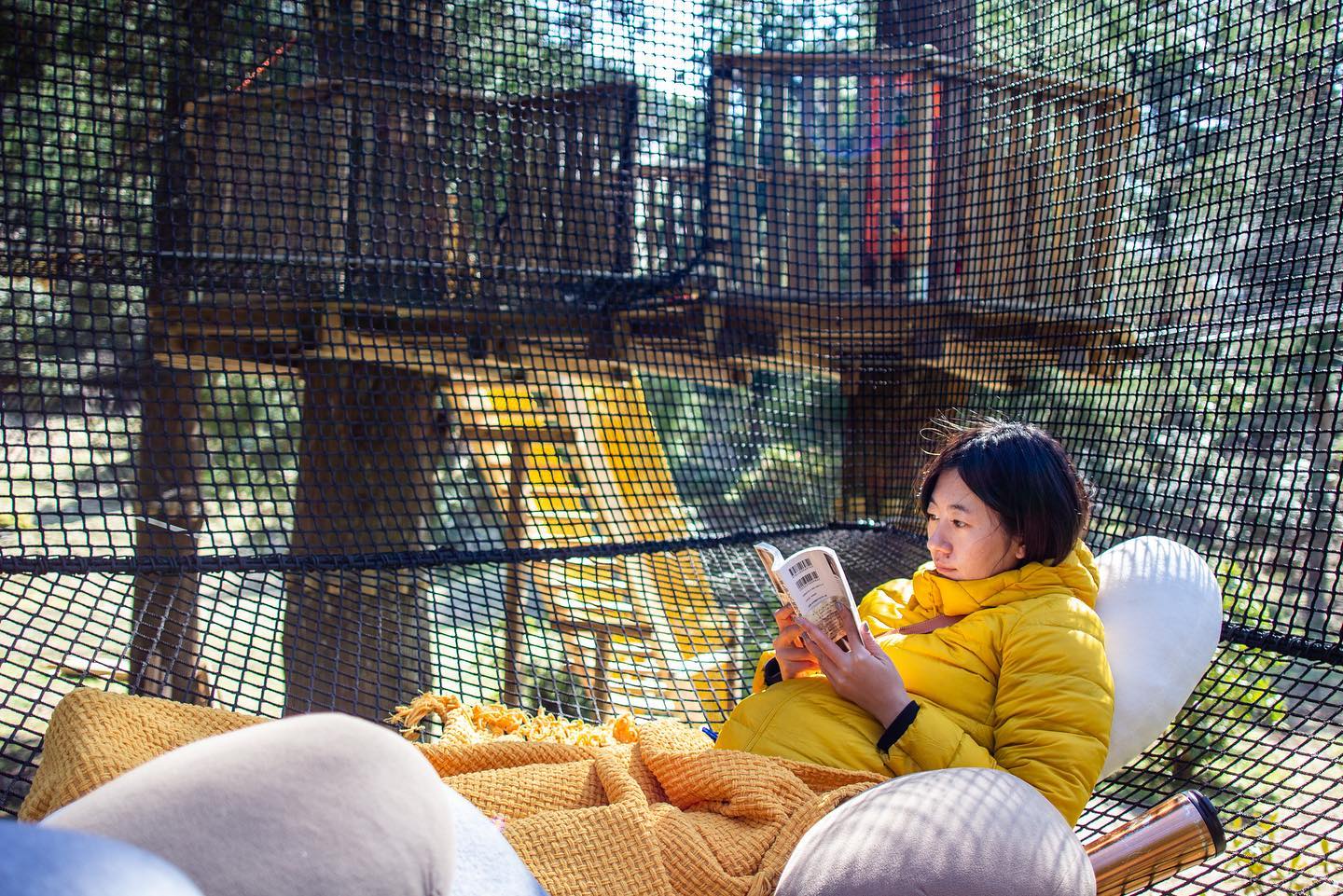
He found support for his idea at the village office. They allocated a two-hectare forested area to the project and supplied the financial support for the installation, which was outsourced to a French company.
In April 2020, the park opened. Ferreri set up a company that serves as the operator of Kuchu no Mura. He is the owner, CEO and manager at the same time and he employs three members of staff now. He took out a small loan to cover initial operational expenses but reached his break-even point last year (2021) when 5,000 visitors came to the park. This year he hopes for 6,000 visitors.
From business school straight to the forest
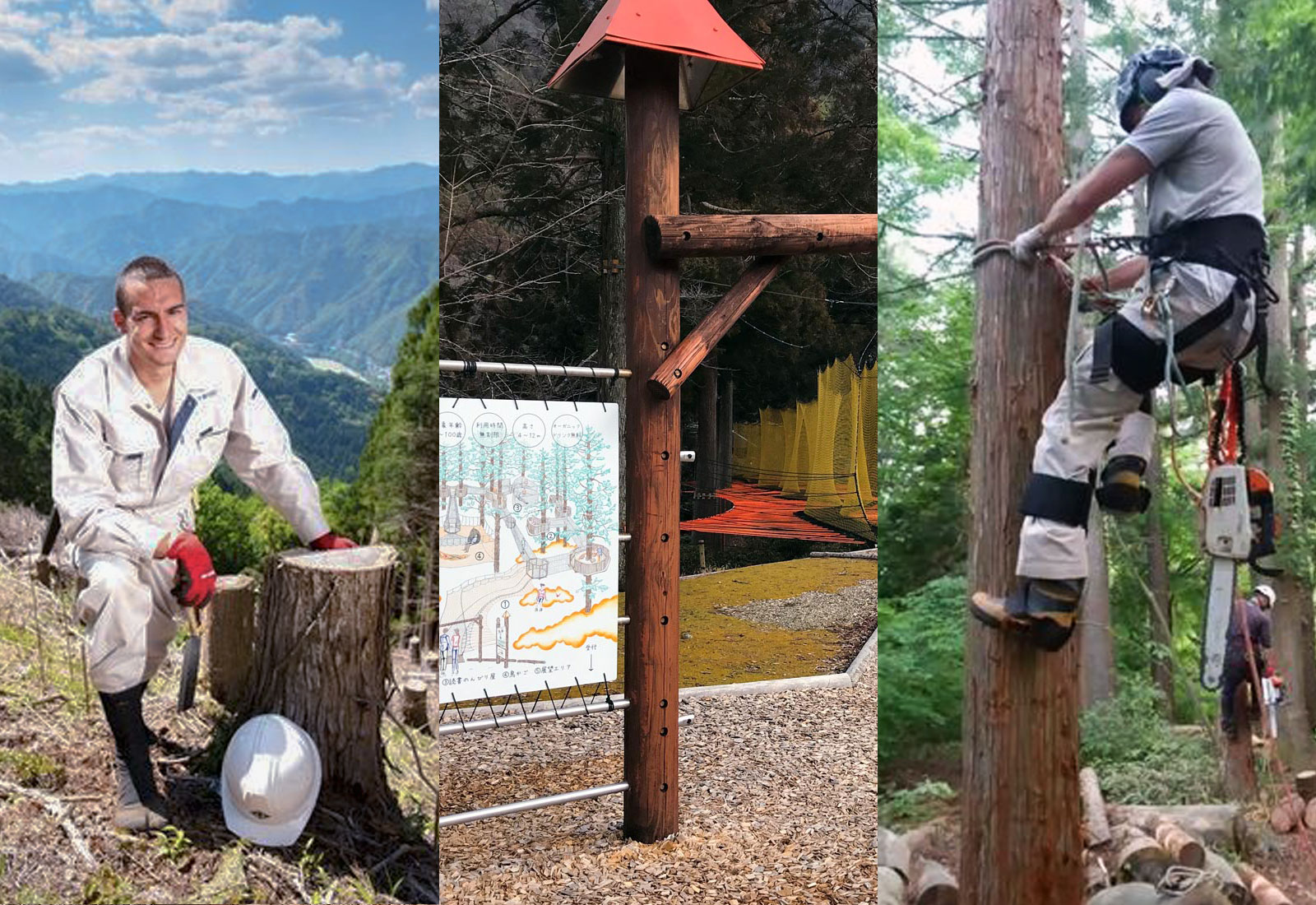
When Ferreri — who hails from Grenoble in France — joined the Agricultural and Forestry Division at the Totsukawa Village Office, he was thrown in at the deep end. He had signed up to learn Japanese forestry from scratch.
Ferreri had just completed the two-year International Management Course (IMC) at the School of Business of Kwansei Gakuin, a prestigious private university in the Nishinomiya mountains between Kobe and Osaka. So, he went from international MBA graduate to becoming a village logger.
In applying for graduate jobs in Japan, Ferreri’s childhood interest in nature and forestry had surfaced again. When he asked one of his university teachers about the option of securing a job in a forestry-related company in Japan, he was introduced to Totsukawa. This village, deep in the mountains of the Kii Peninsula, has a long-standing forestry tradition.
In the summer of 2011, after the devastating effect of typhoon Talas on the natural surroundings of Totsukawa, the village locals recognized their duty to invest in the protection of the mountains by revitalizing forestry. The timing was perfect for Ferreri to knock on the village office’s door.
After a tour through the village guided by the deputy mayor, Ferreri was given the chance to apply for a position in Totsukawa under a government-sponsored regional revitalization scheme. After several rounds of interviews, he was accepted on a three-year contract that started in November 2016.
The dilemma and a solution
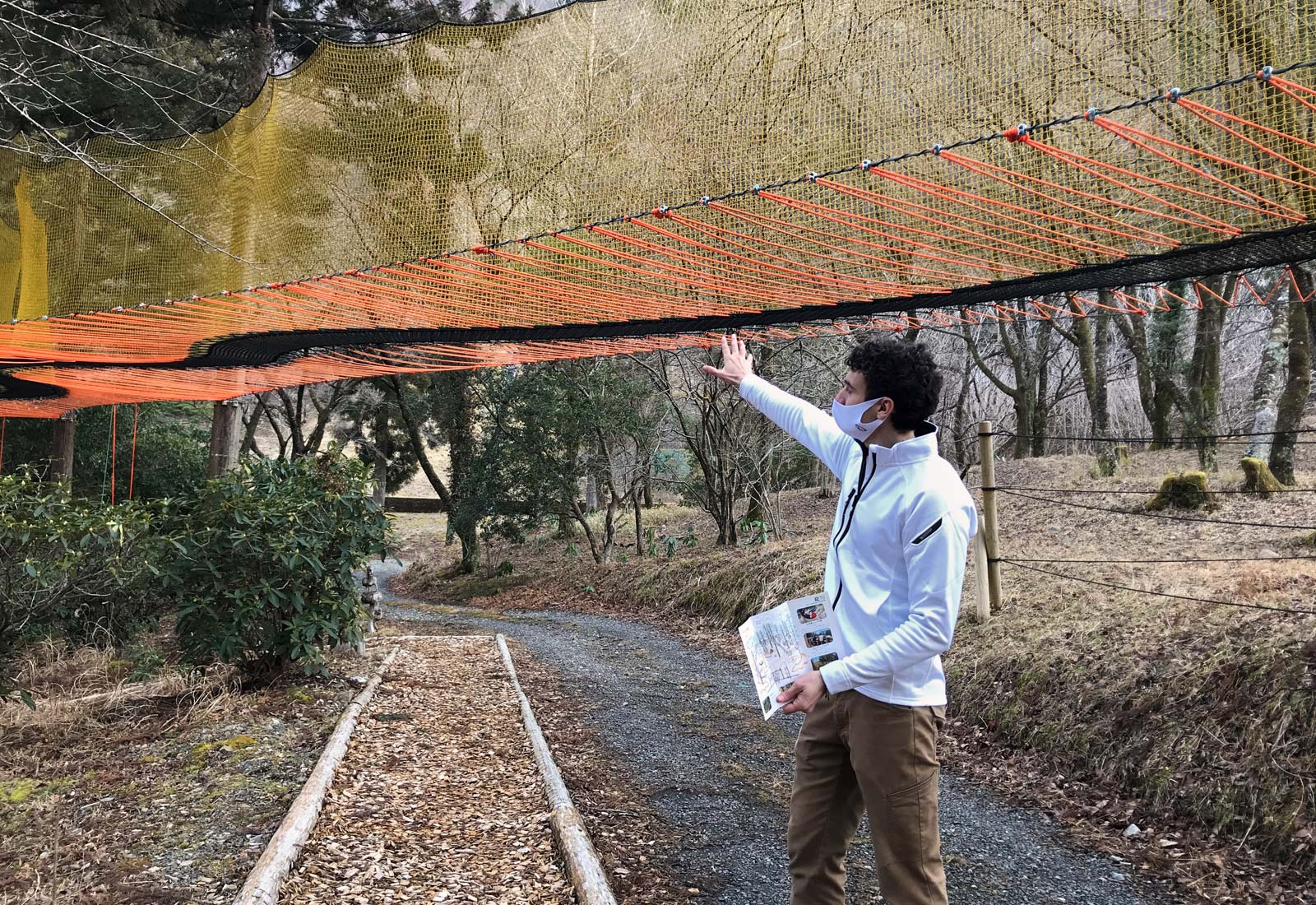
The population of Totsukawa has been declining constantly like elsewhere in rural Japan.
Young people have no interest in the family’s forest and they do not want to work in forestry. They leave the village for employment in the city while experienced forestry workers go into retirement. As a result, the pool of skilled forestry workers is rapidly declining, and forest management is being neglected.
“There is abundant nature all-around, but the vitality of the local community is lost. The village is in desperate need of people who come to settle here and who would like to engage in forestry work,” says Ferreri.
“I kept thinking what I could do to help revitalize the village beyond my three-year assignment. How could Totsukawa attract people to visit and hopefully fall in love with the area, thereby creating potential for people moving here,” he adds.
Ferreri grew up in the French Alps where he experienced the forest being used for recreational purposes rather than just being considered a resource.
“I was thinking about whether there could be a recreational forest in Totsukawa and what it would look like. At the same time I also wanted to create my future workplace in nature here. This is how the idea of the Kuchu no Mura was born.”
Studying the forest
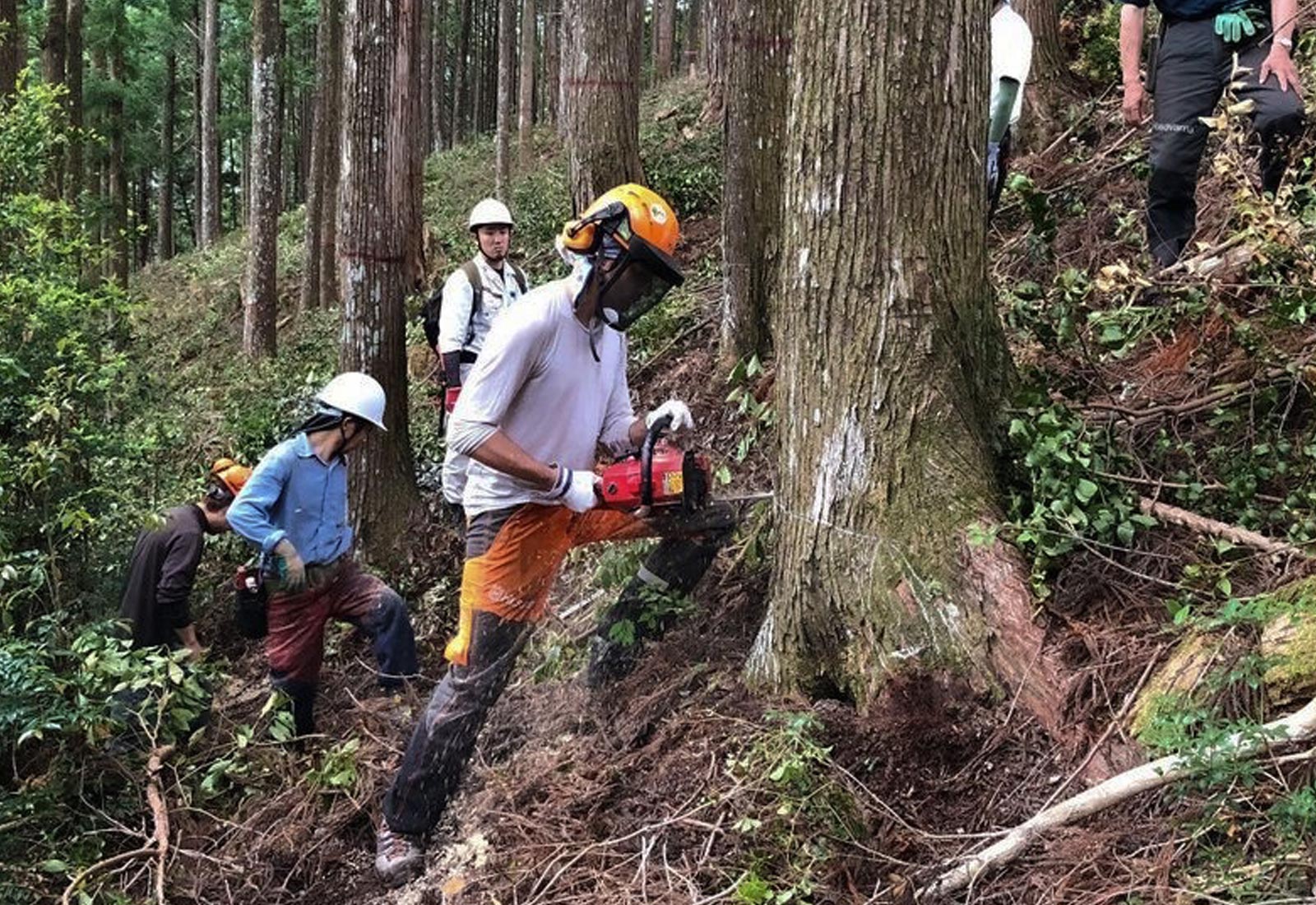
“I had to learn about all the local tree species, their growth cycle and about all the forestry tasks and forestry machinery. I was taken to various forest sites and had to remember all the steps of forest management. There is a lot of work before logging, in the form of tending, pruning and thinning the forest,” says Ferreri.
“There were many friendly people who helped me adjust to life in Totsukawa and who happily passed on their forestry knowledge to me,” he remembers.
The Forest Owner Association of Totsukawa has many members and there are over 20 local companies engaged in commercial logging and another three companies dealing with sawing and processing of timber.

Beyond being a timber source, the forested mountains of Totsukawa are a rich water reservoir and the forest also protects the area from massive landslides such as were experienced in 2011.
“Forestry has been in decline all over Japan, and in Totsukawa, too. The village tries to revitalize Totsukawa Forestry by introducing a Western forestry system, including forest planning and the usage of advanced machinery. I thought I could help them by somehow being a cross-cultural bridge,” he remembers.
Totsukawa began to cooperate with Switzerland, which is a country with a sustainable forest management system where natural regeneration is promoted and clear cutting is the exception. A group of forester trainees came to Totsukawa and Ferreri was put in charge of guiding and interpreting for them.
A ‘village in the sky’
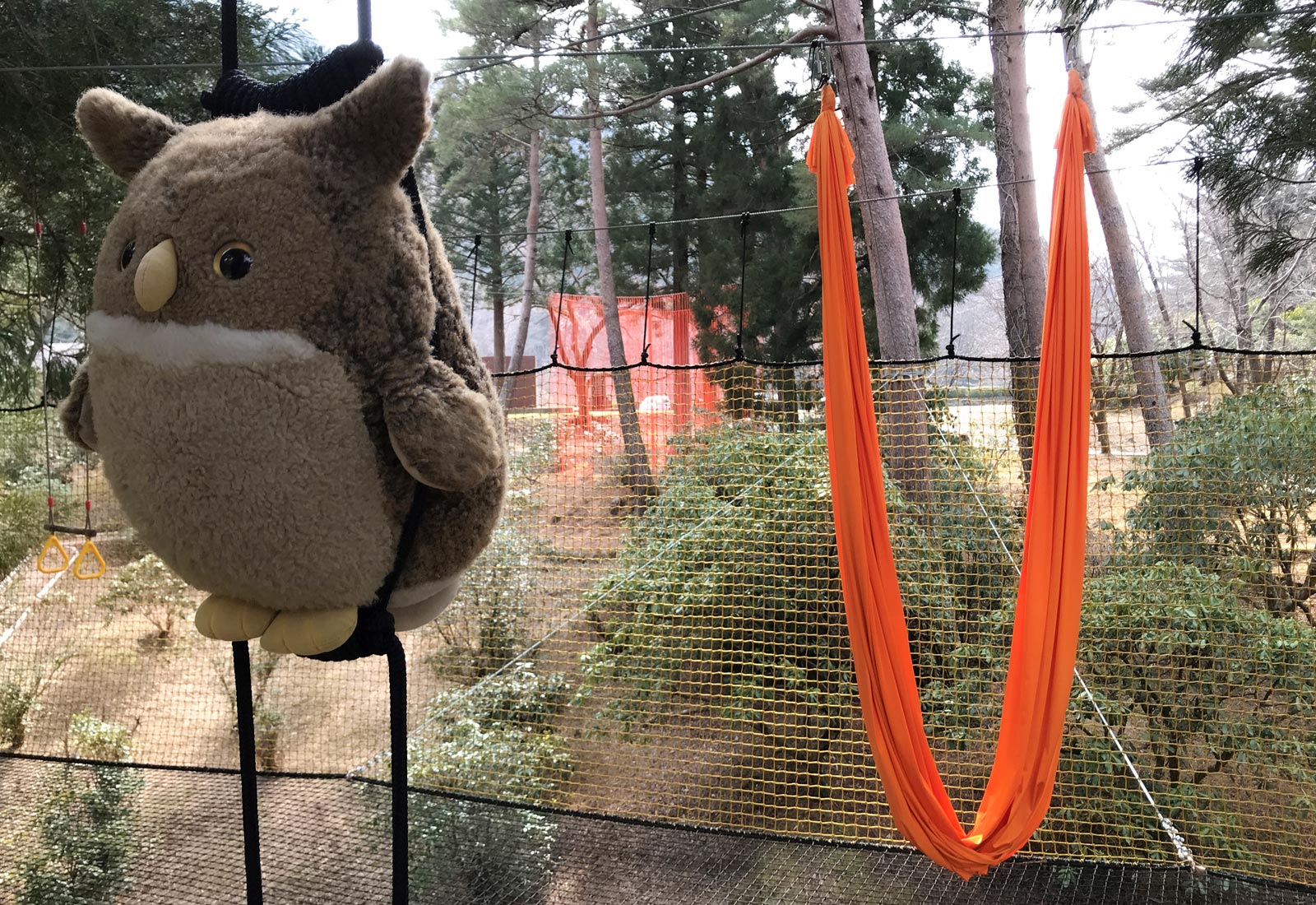
You can enjoy a relaxing playtime crossing a net suspension bridge, having a picnic or drinking organic coffee or tea at a tree house while browsing through some nature-themed books in the tree-top book corner, or relax at the napping space, a kind of “bird’s nest” where you can feel like you are floating in the air.
True to his eco-vision, the wooden railings around the five experience areas up in the air also serve as space for environmental education. Short explanations of eco concepts are engraved in the wood.

“This is forest bathing that is suitable for all ages. I tend to say from 3 to 100 years old. You can be as active or passive as you like under the green canopy of up to 12-meter-tall trees, most important of all, I want you to relax and enjoy.”
With each new visitor to Kuchu no Mura he sees his dream of revitalizing Totsukawa by attracting potential new residents come true, whether they would be working in forestry remains to be seen.
- External Link
- Kuchu no Mura (Japanese) https://kuuchuu-no-mura.com/
















4 Comments
Login to comment
ArtistAtLarge
Excellent article!
Seigi
Very inspiring! More this kind of article please!
BackpackingNepal
Ever since i watched 2014 Japanese movie "Wood Job", i find the foresty interesting esp with Japanese culture.
Benigne
Very nice article - inspiring to see rural start ups! The countryside is full of opportunities.